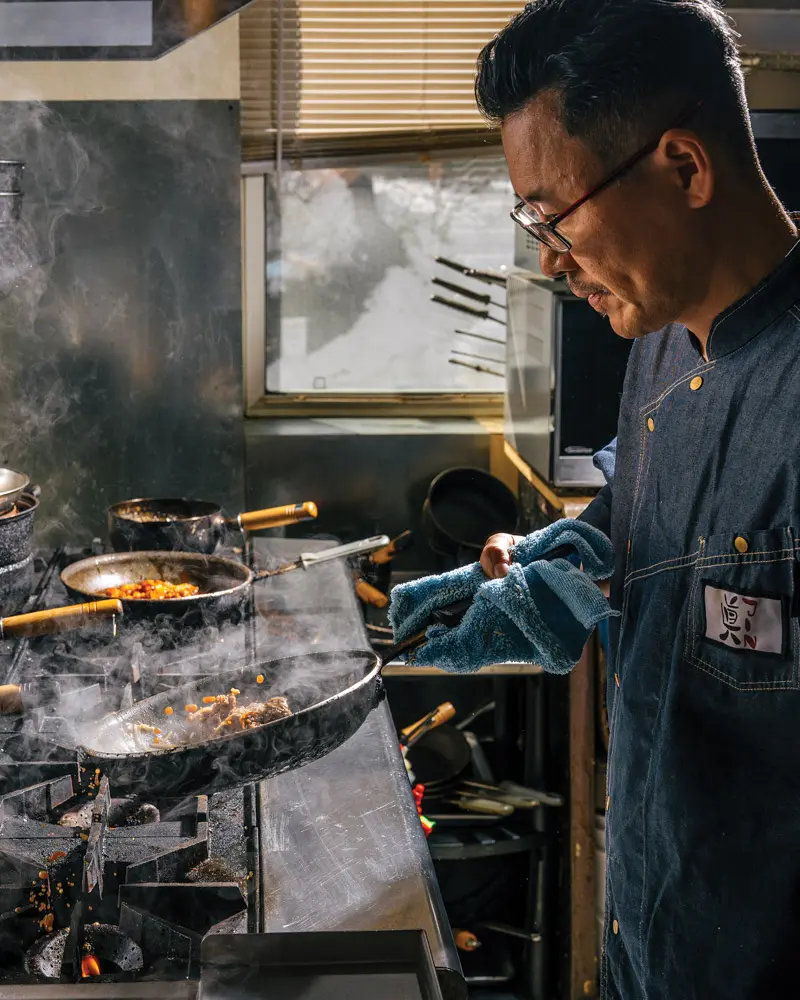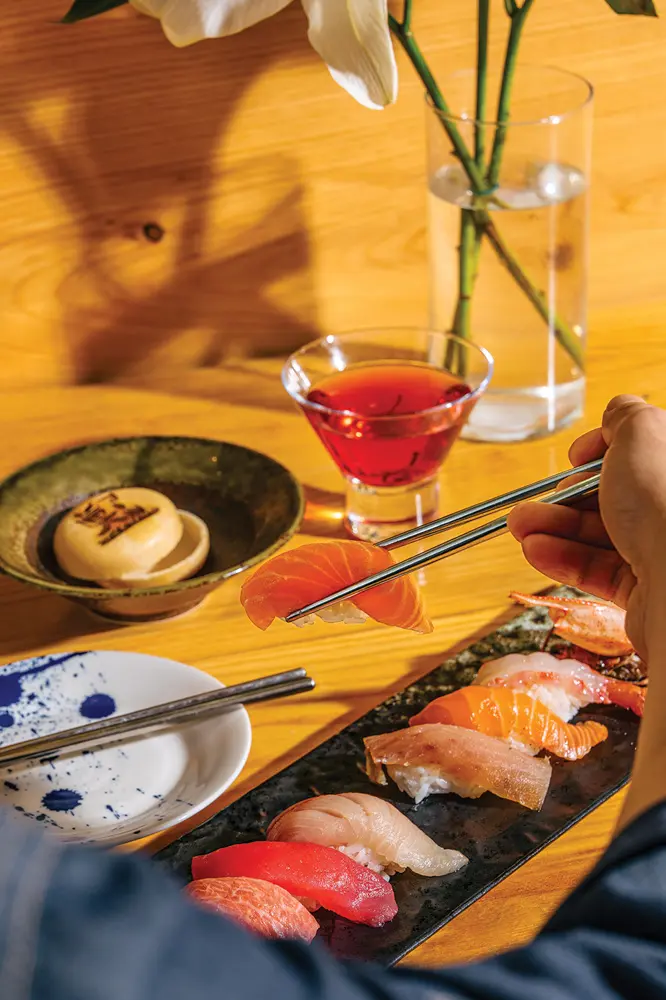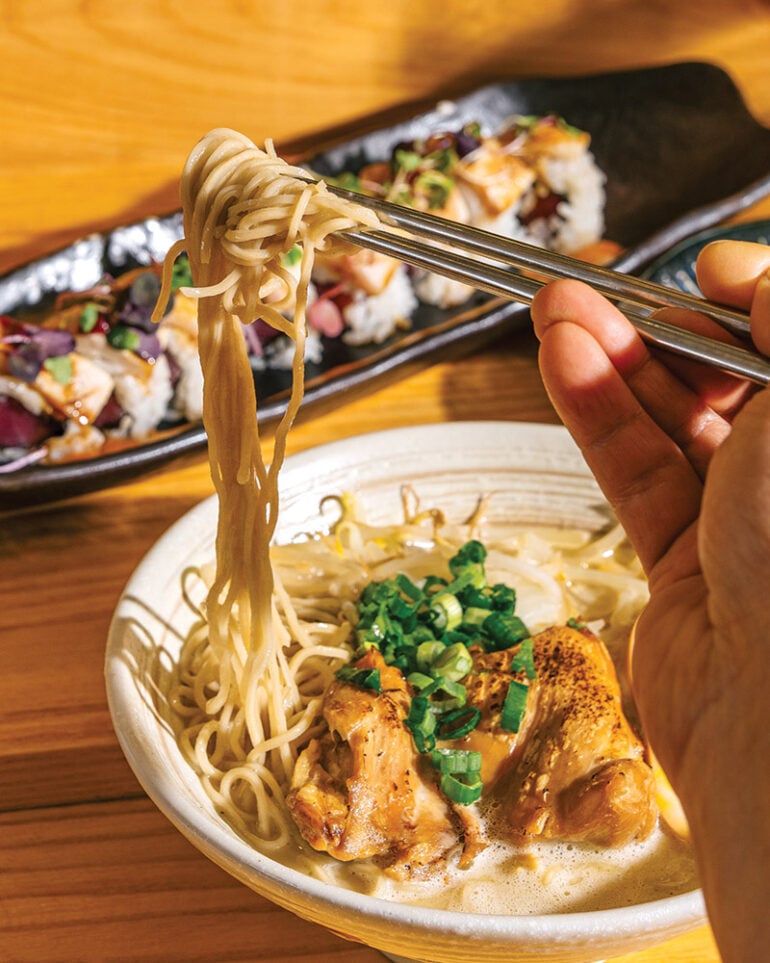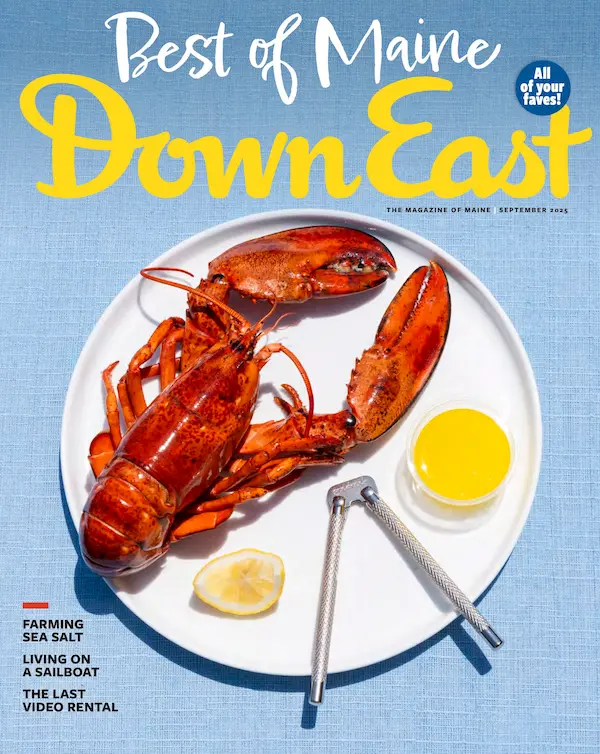By Brian Kevin
Photos by Kody Theriault
From our June 2025 issue
Although he’s Korean, chef Hwansoo Kim has nursed a fascination with Japanese culture ever since he was a kid reading manga comics in Seoul. It was there, in the South Korean capital, that he trained as a sushi chef and got his first job in a Japanese restaurant. Then, in his 20s, he worked in Vancouver and found himself fascinated by the way cultures swirled together in that coastal Canadian metro. Most of his friends there were Japanese, although the ones who cooked didn’t all specialize in Japanese cuisine. Diners came from every part of Canada, the United States, and beyond. “Everything was mixed, and I really liked that,” Kim remembers. His path, he decided, was to live and work abroad.
Sixteen years after Kim found his way to Maine, Jin Sushi and Ramen, his small and casual restaurant off Saco’s main drag, captures that spirit of cultural crossover — and it’s a standout in a Saco-Biddeford food scene that doesn’t want for great eats. I stopped in with a party of seven on a recent Saturday night and was seated next to Kim’s pride and joy: his $30,000 Yamato noodle machine. When Jin is closed, he wheels the apparatus, the size of a typical photocopier, into the middle of the room, where he spends at least 10 hours a week making noodles from Aroostook buckwheat flour. (During service, the machine sits in a corner, gleaming. “They said it’s made out of some kind of spaceship material,” Kim says. “It’s going to last forever.”)



Our table ordered two of the ramen dishes off Jin’s menu of five: Both the kimchi bulgogi ramen and the chicken nanban ramen mash up the traditional Japanese noodle soup with classics of Korean cuisine. The former was an umami bomb, with thin, tender slices of bulgogi beef in a rich dashi broth, the kimchi adding a bright, tart note. (The dish is served in a hot stone bowl, per Korean tradition.) The latter was a meal’s worth of sweet-and-spicy Korean fried chicken, crispy as could be, bobbing in a salty, tangy shoyu broth. And the noodles? Superb. Sturdy, with a perfect bit of chew and a nice golden hue from the buckwheat.
The fusion-y approach to those dishes notwithstanding, Kim’s ramen bona fides are authentic. His first kitchen gig in Maine (where he came somewhat arbitrarily) was on the sushi line at the beloved, since-closed Fuji, in the Old Port, after which he joined the kitchen at the award-winning (and still kicking) Miyake. After six years as a Miyake sushi chef, he took up managing its ramen-bar spinoff, Pai Men Miyake. Then, in 2017, he made a pilgrimage to the Miyajima Ramen School, in Osaka, Japan, studying one-on-one with its founding noodle sensei.

He opened his own place in Saco the next year. “Jin” is a Chinese character representing purity — also adopted in Japan and Korea, Kim says — as well as a nod to his wife’s first name, Jinsun. A commitment to purity was in evidence in the choice nigiri plate, seven perfect little rice mounds topped with bluefin tuna, Maine eel, salmon, and the standout, a lightly seared swordfish with a bit of smoked salt (like most of Jin’s seafood, it came from Portland’s Harbor Fish). The menu’s spread of 50-plus maki rolls, meanwhile, runs the gamut from classic, like shrimp tempura with avocado, to nontraditional, like the Maine lobster, Kewpie mayo, and roe, which roughly approximates a lobster roll.
Desserts were right out of a Tokyo tearoom and shouldn’t be skipped: The green tea and strawberry mochi (rice cakes with ice-cream filling) were delightfully sticky and subtly sweet. The fish-shaped taiyaki pastries were filled with luscious vanilla cream. On the way out, we stopped to admire a 3D mural of black-and-white ramen bowls that Kim artfully installed on a dining-room wall, each as empty as the ones we’d left on the table.




